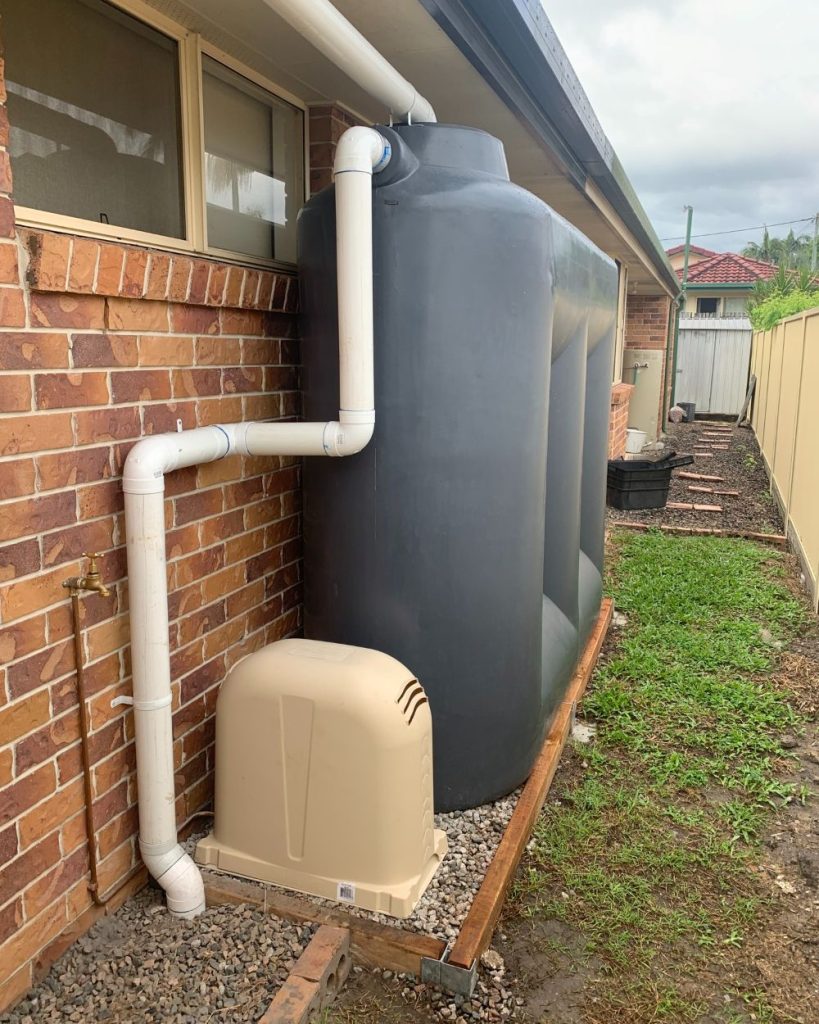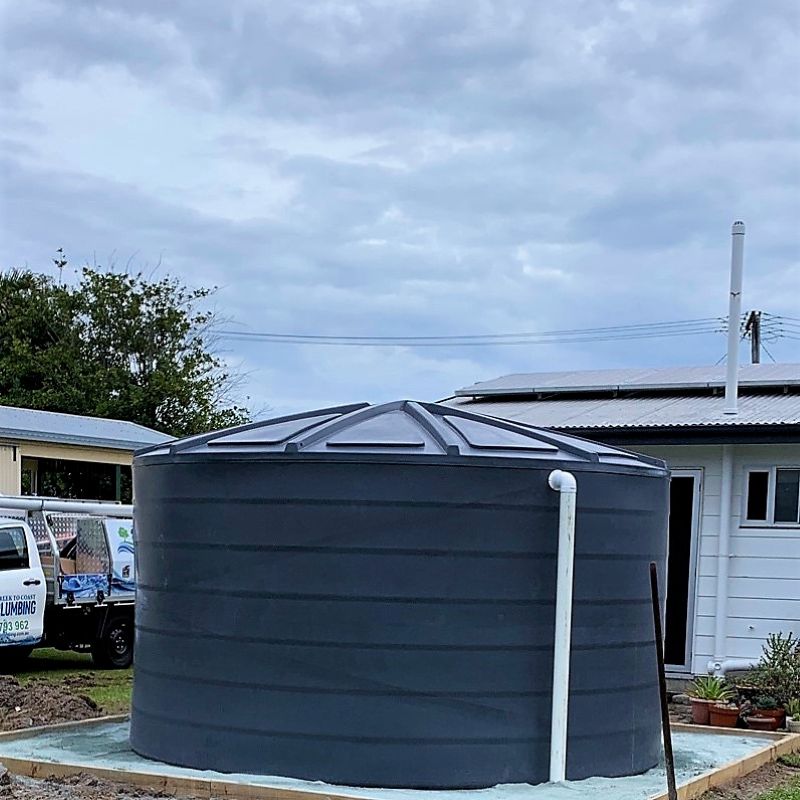Selecting the Most Suitable Rainwater Harvesting System to Complement Your Lifestyle and Conserve Water Resources
Throughout Queensland, an increasing number of homeowners are adopting rainwater tanks as a means to significantly reduce utility expenses, alleviate pressure on local water supplies, and develop drought-resilient homes. Before committing to a rainwater tank purchase, it is vital to answer a critical question: How much water do you genuinely require?
At Creek to Coast Plumbing, we specialise in assisting homeowners in creating effective rainwater harvesting systems. Identifying the right tank size is an essential initial step in this process, ensuring your system meets your needs.

Maximise the Benefits of Your Rainwater Collection System
Evaluating your rainwater collection potential is the foundational step towards successful water management. This assessment hinges on two key factors: your roof area and the average annual rainfall in your locality. Understanding these elements is crucial for optimally planning your rainwater system.
Consider the following specifics:
- Generally, for each square metre of roof area, you can expect to collect approximately 1 litre of water for every 1mm of rainfall.
- If your roof spans 200m² and your region receives an annual rainfall of 1,200mm, you could potentially harvest 240,000 litres each year.
However, it is essential to recognise that this is an ideal scenario. In practical terms, various factors such as first flush systems, evaporation, roof slope, gutter design, and overflow can lead to water loss.
Thus, we typically recommend planning for a collection efficiency of 80–90% to account for these potential losses.
What Are Your Plans for Using the Collected Rainwater?
This is where practical considerations become crucial. Are you collecting rainwater exclusively for garden irrigation, or do you plan to utilise it for toilets, laundry, or even for your entire household?
Here are some key factors to take into account:
Determine the Optimal Tank Size for Your Gardening Needs
If your primary goal is to irrigate lawns, vegetable patches, or ornamental gardens, a small to mid-sized tank (2,000–5,000 litres) should suffice.
Nonetheless, this largely depends on the scale of your garden and the local precipitation patterns.
In areas prone to short, intense rain showers, larger tanks may be necessary to capture as much rainwater as possible during these downpours.
Incorporating Rainwater for Laundry and Toilet Uses
Residences that utilise rainwater for toilets and washing machines typically find that 5,000–10,000 litre tanks offer significant benefits. These appliances often contribute approximately 35–40% of indoor water consumption, resulting in considerable cost savings over time.
It is essential to include a pump and the appropriate plumbing to connect these systems to your household, a service that Creek to Coast expertly manages as part of our installation offerings.

Considerations for Supplying Rainwater to Your Entire Home
If your ambition is to achieve complete self-sufficiency or to provide rainwater to every tap in your residence, you will likely require 20,000 litres or more, depending on your household size. Larger tanks can also serve as a backup water supply for fire emergencies, during droughts, or when entertaining guests.
How Many Residents Are in Your Household?
A useful guideline suggests allocating around 150–250 litres per person per day when using rainwater for general household purposes.
- For a couple: a 5,000–10,000 litre tank is typically adequate.
- For families of four or more: consider 10,000–20,000 litres or larger to ensure an ample supply.
The number of inhabitants in your home will directly affect how quickly your tank depletes, especially during dry spells when water conservation becomes essential.
Is Your Roof Area Sufficient for Effective Rainwater Harvesting?
The size of your roof is a critical factor in determining how much rainwater you can effectively collect.
A larger roof area enables a greater capacity for water harvesting.
Additionally, the design of your roof is also important. If your home features multiple roof sections that can channel into a single tank, we can create a streamlined downpipe system to maximise water capture from all available surfaces.
For smaller homes or townhouses, slimline or under-deck tanks may be the most appropriate choice, and Creek to Coast is ready to assist in identifying the ideal solution for your specific requirements.

Essential Elements: Placement, Guttering, and Overflow Management for Rainwater Systems
Successful rainwater harvesting involves much more than merely having the tank itself.
An effective system requires:
- Robust, well-maintained gutters to prevent blockages
- Leaf guards and first flush diverters to guarantee water quality
- Overflow systems that safely redirect excess water away from your home’s foundations
- A stable, level tank pad or stand to support the structure securely
Creek to Coast Plumbing provides comprehensive rainwater system installations, including gutter enhancements, pump connections, stormwater management, and filtration systems, ensuring that your tank is secure and ready for use from day one.
How Can You Ensure Cleaner and Safer Rainwater for Your Household?
We strongly recommend installing a whole-house rainwater filtration system, especially if you intend to use your harvested rainwater for purposes beyond simple garden irrigation.
The Puretec Hybrid Plus systems, expertly fitted by our team, can effectively remove sediments, odours, tannins, bacteria, and also adjust the water’s pH to minimise copper leaching and pipe corrosion. Discover the many advantages of implementing water filtration for your collected rainwater.
Making Thoughtful and Informed Choices for Your Rainwater Tank Selection
Choosing a rainwater tank is not simply a matter of selecting the largest option available; it’s about aligning your system with your roof size, local rainfall patterns, and your individual water usage requirements.
At Creek to Coast Plumbing, we have proudly supported Queensland homeowners in establishing sustainable rainwater systems for over 30 years. From identifying the perfect tank size and optimal placement to complete guttering and filtration solutions, we are committed to ensuring that you get the most from every precious drop of rainwater.
The Article: Choosing the Right Size Rainwater Tank for Your Queensland Home first appeared on https://writebuff.com
The Article Choosing the Right Size Rainwater Tank for Queensland Homes Was Found On https://limitsofstrategy.com

